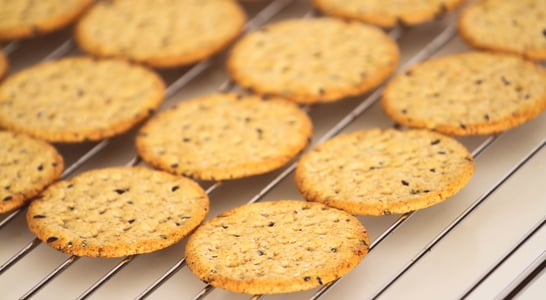
Flake Appreciation Day
Flake Appreciation Day celebrates the beauty and uniqueness of snowflakes. This special day highlights how each snowflake is a marvel of nature, with no two flakes being exactly alike.
The intricate designs of the snowflakes transform the winter landscape into a magical wonderland, evoking a sense of wonder and tranquility.
This day encourages people to pause and appreciate these tiny, delicate works of art that fall from the sky, creating a peaceful and enchanting atmosphere.
Reasons for Celebrating Flake Appreciation Day
People celebrate Flake Appreciation Day for several reasons. Snowflakes remind many of their childhood, bringing back fond memories of playing in the snow and experiencing the simple joys of winter.
This day also emphasizes the natural beauty found in these delicate ice crystals, which brighten the winter season and transform landscapes into stunning, white scenes.
Additionally, appreciating snowflakes helps foster a sense of calm and relaxation, as their beauty and uniqueness inspire awe and wonder.
History of Flake Appreciation Day
Flake Appreciation Day celebrates the beauty and uniqueness of snowflakes, highlighting their intricate designs that transform winter landscapes.
The origins of this special day are not well-documented, but it is likely inspired by the work of Wilson Bentley, a Vermont native born in 1865.
Bentley, known as “The Snowflake Man,” pioneered the photography of snowflakes using a technique called photomicrography. He captured over 5,000 images of snowflakes, proving that no two are alike, and published his findings, which fascinated the public.
Bentley’s work sparked a deeper appreciation for snowflakes, leading to the creation of Flake Appreciation Day.
This day encourages people to marvel at the natural artistry of snowflakes, reflecting on their unique patterns and the science behind their formation.
Celebrated in December, when snow is common in the Northern Hemisphere, it invites people to pause and admire these delicate ice crystals.
How to Celebrate Flake Appreciation Day
Create Snowflake Art
Gather paper, scissors, and creativity! Fold and cut paper to make unique paper snowflakes. Experiment with different patterns.
Try adding glitter or coloring them for extra flair. Display your masterpieces around the house to bring winter indoors.
Catch Snowflakes on Your Tongue
Step outside and catch snowflakes on your tongue. It’s a simple, delightful activity that brings out the child in everyone.
Enjoy the cool, fleeting taste of each unique flake. Don’t forget to bundle up in your coziest winter clothes.
Snowflake Photography
Grab a camera and capture the beauty of snowflakes. Use a magnifying glass or macro lens for detailed shots. Share your photos on social media using #FlakeAppreciationDay. Impress your friends with your newfound photography skills.
Read About Snowflakes
Curl up with a good book about snowflakes. Explore how they form and why each one is different. “Snowflake Bentley” is a great choice for kids and adults alike.
Learn something new while staying warm inside.
Bake Snowflake Cookies
Bake delicious snowflake-shaped cookies. Use cookie cutters to create fun shapes and decorate with icing. Share your sweet treats with family and friends. Enjoy a tasty way to celebrate the day.
Flake Appreciation Day FAQs
Are snowflakes white?
Although snowflakes appear white, they are actually translucent. The complex structure of ice crystals scatters light in all directions, giving snow its white appearance.
Is it true that snowflakes can be even pink?
That’s correct! In certain conditions, snow can appear pink or red due to the presence of freshwater algae that produce red pigments. This phenomenon is often referred to as “watermelon snow.”
What is a snowflake’s structure?
Snowflakes typically exhibit a hexagonal structure with six arms or sides. This sixfold symmetry arises from the molecular arrangement of ice crystals as they form.
What’s specific about snowflakes?
Each snowflake begins forming around a tiny particle, such as dust or pollen, which serves as a nucleus for ice crystal formation.
What speed do snowflakes fall?
The descent speed of snowflakes varies based on their size and atmospheric conditions. On average, they fall at a rate of about 1.5 miles per hour.
What size can they be?
While most snowflakes are small, some can reach impressive sizes. In 1887, a snowflake measuring 15 inches in diameter was reported in Montana.
What’s an interesting fact about snowflakes?
Freshly fallen snow absorbs sound waves, leading to a noticeable hush after a snowfall. This acoustic dampening occurs because the porous structure of snow traps sound waves.
How are snowflakes studied?
Scientists study snowflakes by capturing them on glass plates coated with chemical compounds. The compound hardens around the snowflake, preserving its structure for analysis.
Can snowflakes be identical?
While natural snowflakes are unique, scientists have created identical snowflakes under controlled laboratory conditions by manipulating temperature and humidity.
What symbols are snowflakes associated with?
Snowflakes often symbolize purity and individuality in various cultures. For example, the Order of Canada uses a stylized snowflake to represent the northern heritage and diversity of Canadians.
Also on ...
View all holidaysBake Cookies Day
Make a batch of your favorite biscuits, experiment with imaginative cookie cutter shapes or organize a bake sale for charity.
World Arabic Language Day
Like a melody from a distant land, this language dances with intricate calligraphy, inviting exploration into its rich tapestry.
National Roast Suckling Pig Day
A mouthwatering centerpiece, crispy on the outside, tender inside, its aroma filling the air - a feast fit for a king.
We think you may also like...
National May Ray Day
Go outside, plan a picnic, and break out the shorts or summer dresses to usher in the warm rays of May sunshine, flowers, and fresh outdoors air.
National Trails Day
Hit the trails to connect with nature, get some fresh air and exercise. Bring friends, your dog, or take a solo mission, and follow the paths or blaze your own.








